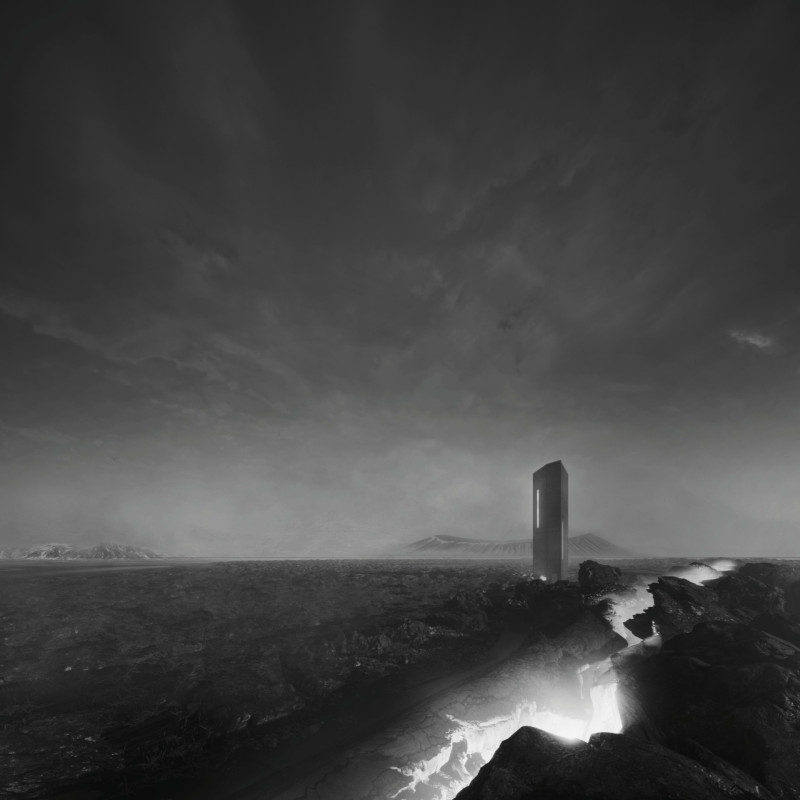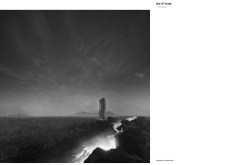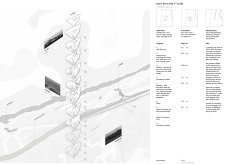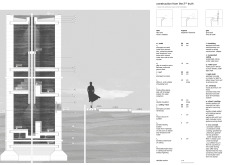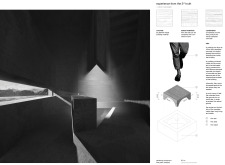5 key facts about this project
“The 4th Truth” is situated in the Kvennagjá area of Myvatn, Iceland. The design aims for a close relationship with the natural landscape. The project emphasizes themes of water, fire, earth, and air, creating a space that encourages community interaction. By considering the natural water systems of the region, the building incorporates elements that relate to the environment around it.
Design Concept
The concept of the design focuses on blending the built environment with the landscape. The building is carefully placed to avoid disrupting natural water flow. Instead, it redirects water toward nearby caves. This choice highlights a respect for natural hydrology, showing an intention for the architecture to work alongside nature rather than against it.
Programmatic Elements
The project includes a variety of spaces designed for public use. A café, measuring 5.4 square meters, offers a gathering place for visitors. The entrance hall, which spans 25.9 square meters, features an information stand and a water pool that uses water from natural sources. A larger waiting and wandering area of 129 square meters invites people to relax and engage with one another, promoting social interaction.
Sustainability Initiatives
Sustainability is an important aspect of the design. The project includes incineration toilets that take up 7.8 square meters, which support environmentally friendly waste management. Additional spaces for storage and technical staff, totaling 55.4 square meters, are dedicated to geothermal systems that enhance energy efficiency. Features like rainwater collection and closed-loop filtration are also included to promote responsible resource use.
Materials
Careful selection of materials is evident throughout the structure. Stamped concrete made from local basalt and limestone provides durability while reflecting the area's geological characteristics. The use of mineral water further connects the building to its environment and serves a functional purpose within the overall design.
The appearance of the building shows a variety of textures. The stamped concrete interacts with the natural surroundings, forming a dialogue between man-made and natural elements. This thoughtful design encourages a deeper understanding of the landscape and its significance.


